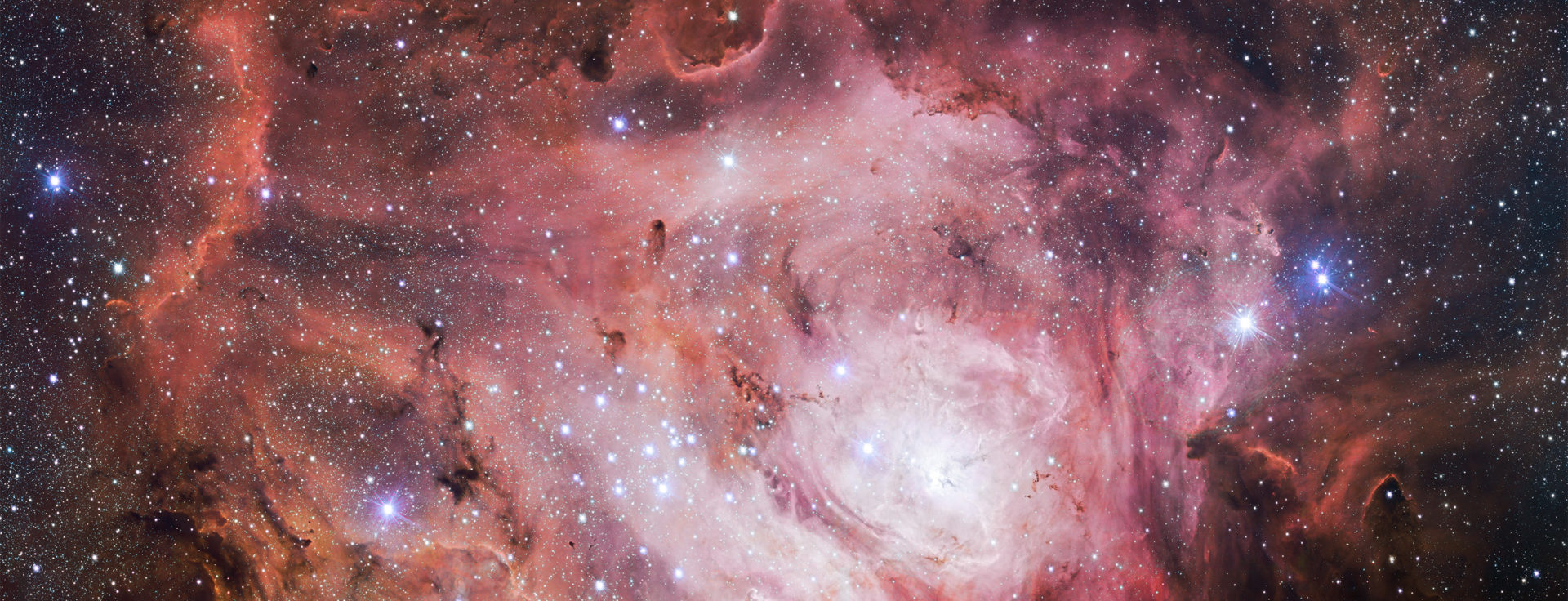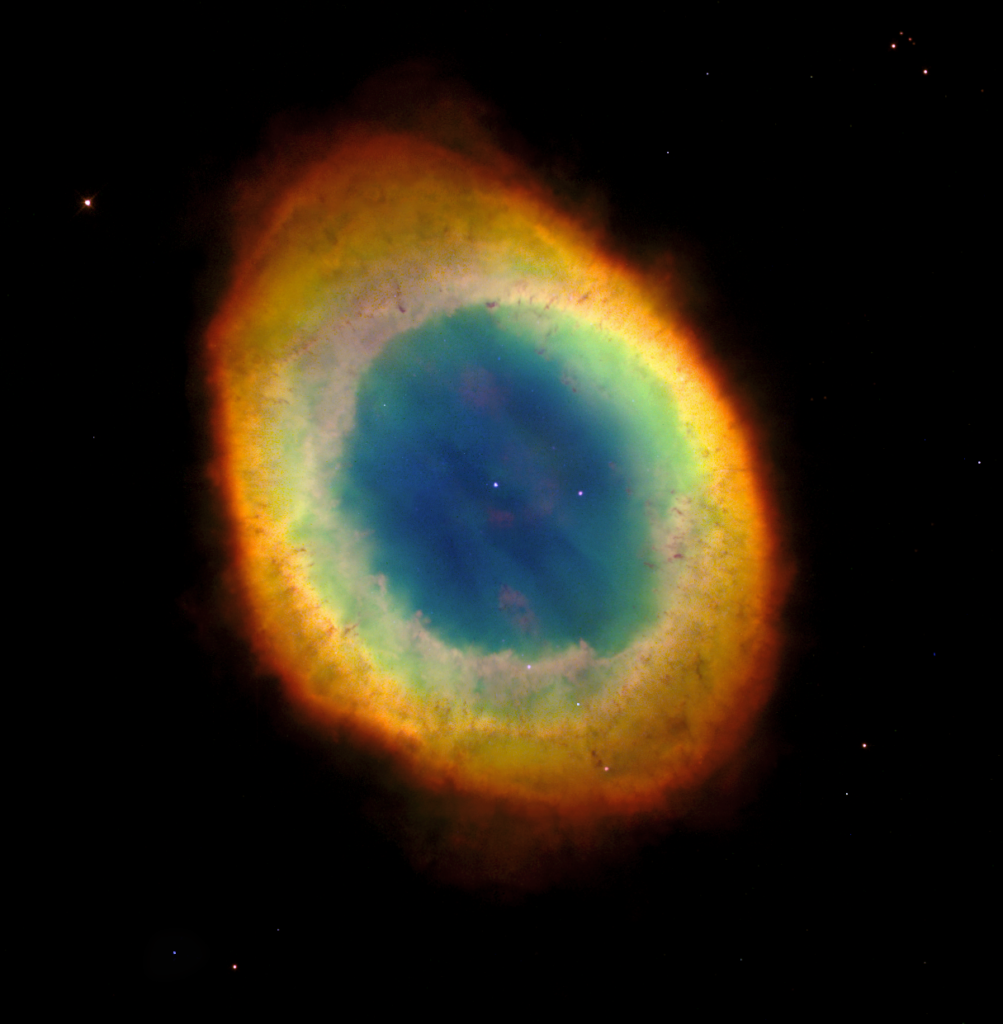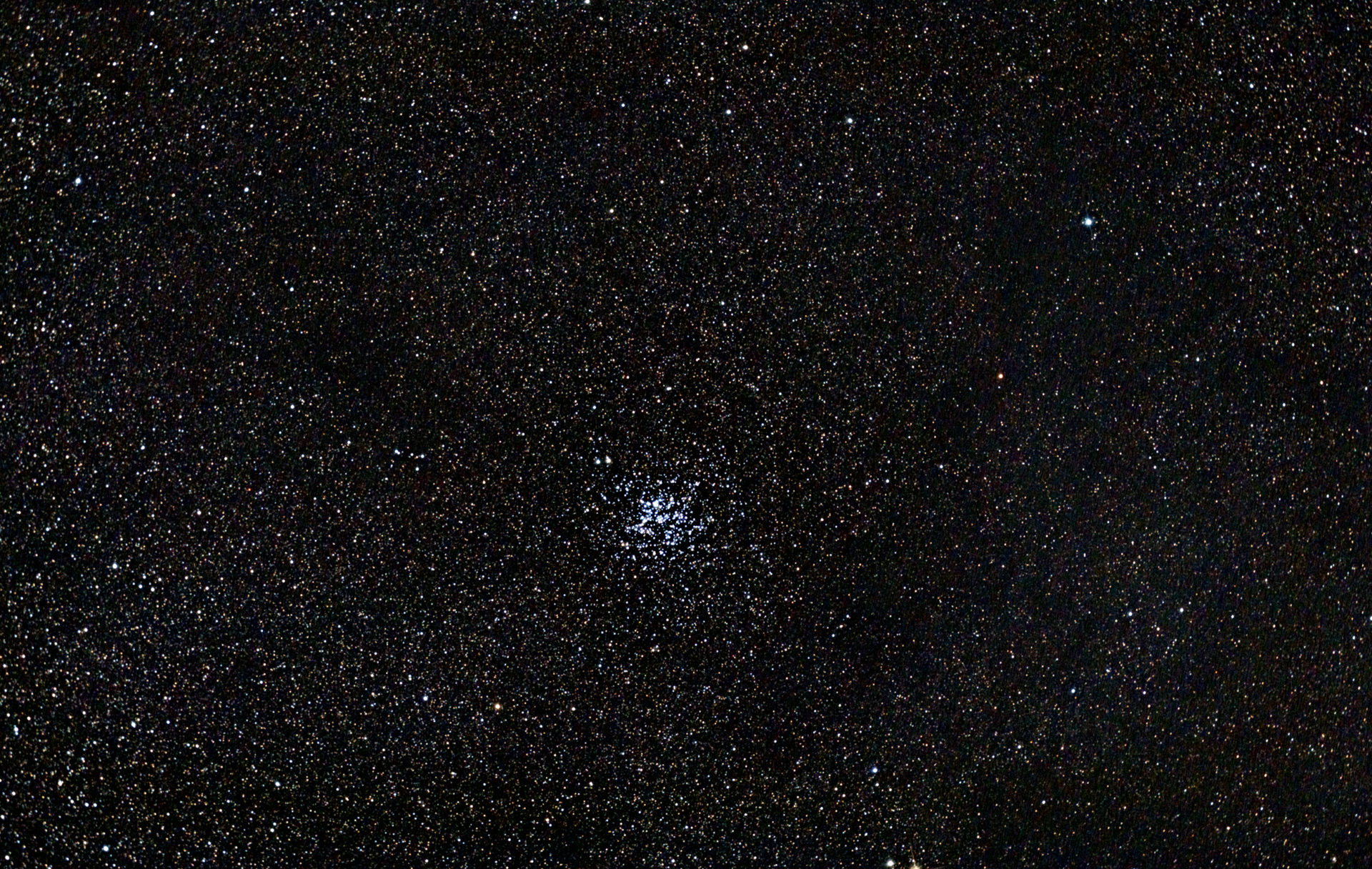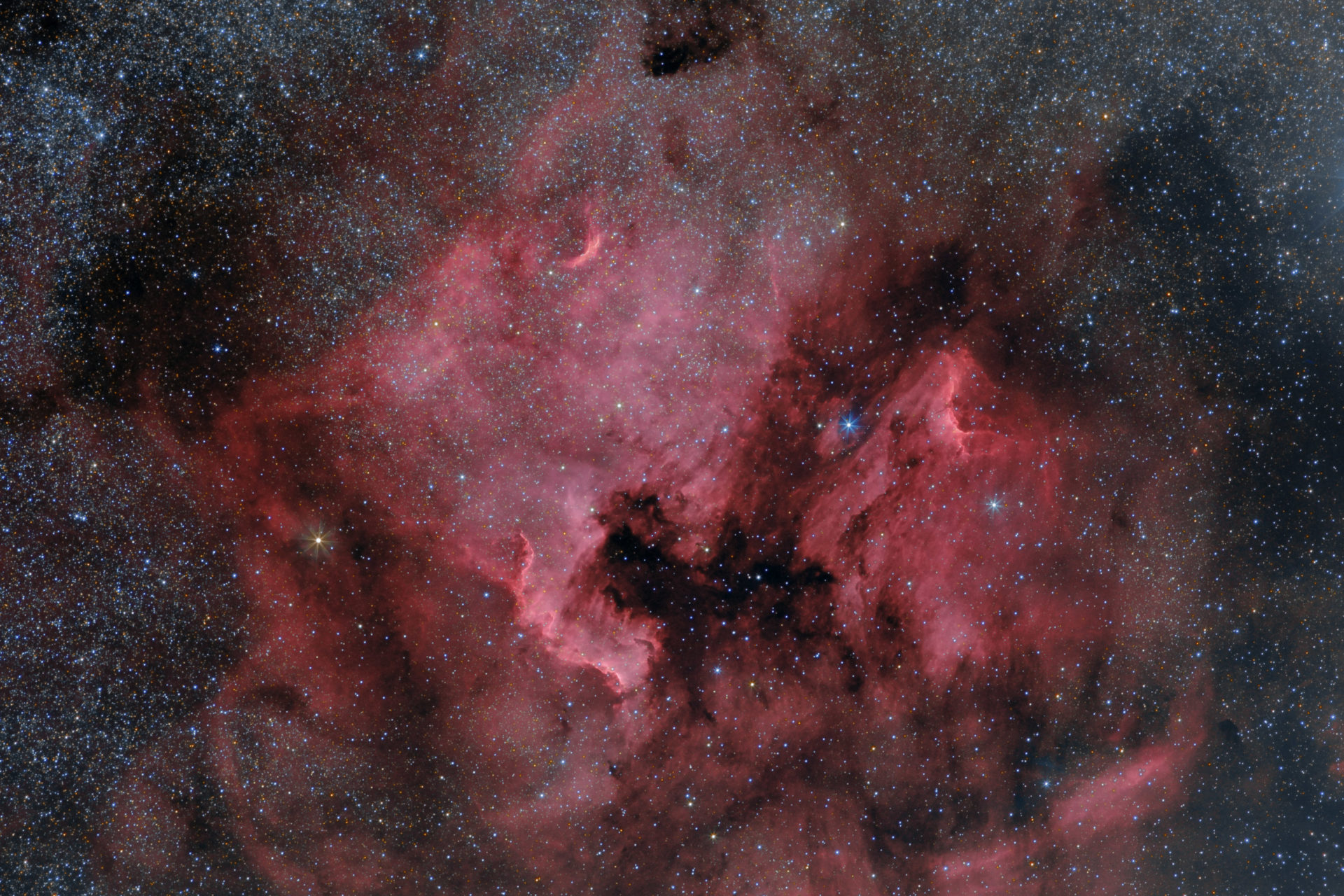
September Sky Lights
Deep sky objects
Published08/31/2020 , by Thaddeus LaCoursiere, planetarium educator
The September evening sky has more objects to look at than you can shake a telescope at.1 Part of this wealth comes from the placement of our Milky Way Galaxy. The bright core of the galaxy is still visible through the month, and can be found to the south-southwest, near the horizon. [Check out our September Night Skies Guide here]
Even without super dark skies, the Milky Way is a superb object to look at through binoculars. The wide field of view will be full of stars, seemingly going on forever. Taking your binoculars and moving up and down the Milky Way from south to north will show you bright clusters of stars. These are thousands of open clusters—dozens, hundreds, or thousands of new stars moving through the galaxy, each cluster held together by their mutual gravitational pull.
Although they will almost blend in with everything around them, extensive studies have helped separate out these clusters from the surrounding stars. Every astronomer has a favorite open cluster,2 so I won’t try to pick just one. Several that are easier to find are Messier 11 (the Wild Duck Cluster), located in the constellation Scutum; Messier 23 and Messier 21, both in Sagittarius; and the Double Cluster in Perseus. Although each of these clusters is the same type of object, they have their own rich histories and studying them can fill up your night and your life, along with your eyepiece. A bonus for you night owls: stay up past midnight and look to the east for Messier 45, better known as the Pleiades!
If clusters of stars aren’t your thing,3 work backward to where stars begin. The Milky Way is also made of gas and dust, with many areas of that gas forming into new stars.
These areas are faint and require a telescope to see, but if you have the time and equipment, brighter regions like Messier 8 (the Lagoon Nebula) and Messier 20 (the Trifid Nebula), both in Sagittarius; or the North American Nebula in the constellation of Cygnus are some of the most popular regions to observe. Each of those areas are filled with a dense collection of hydrogen gas that is collapsing and fusing together, providing the energy for a new star to shine.
Unfortunately all things must come to an end,4 and stars are no exception. Look high above you for the constellation of Lyra, the Harp. In between the last two stars of the Harp you can spot M57—the Ring Nebula. Although just a gray circle in a telescope eyepiece,5 this is a planetary nebula,6 a mere 3,000 light years away. The circle we see is a shell of gas that’s been expelled outward from the star as it reached the end of its life. The remains of the star have collapsed down into a white dwarf, an object only about the size of the Earth, but containing almost the entire mass of the original star.

M57 (The Ring Nebula) as seen by the Hubble Space Telescope, located in space. Credit: The Hubble Heritage Team (AURA/STScI/NASA)
If dying stars have got you down7 don’t despair! As you can see in the September sky, there’s a whole lot of new and existing ones filling up the Milky Way. I hope you get a chance to observe the life and death of stars yourself, just make sure to dress warmly as the seasons change.
—Thaddeus LaCoursiere, planetarium educator
1Please don’t shake your telescopes
2Except for those who don’t
3No judgement here!
4[Citation needed]
5It looks like the ghost of a Cheerio, in fact
6It has nothing to do with planets, astronomers are just bad at naming things
7To Earth
A bonus star forming area!

W 51. Credit: NASA/JPL-Caltech
W 51 is seen here through the “eyes” of the Spitzer Space Telescope. This area is located in Aquila, and is about 17,000 light-years from Earth, and is about 350 light-years—or about two quadrillion miles—across. We can’t see W 51 because the dust clouds in the Milky Way block the visible light being emitted. Radio waves and infrared waves have longer wavelengths and can pass through the dust. In fact, the total infrared emission from W 51 is the equivalent of 20 million Suns! For more information, head over here: https://www.jpl.nasa.gov/news/news.php?feature=7735







